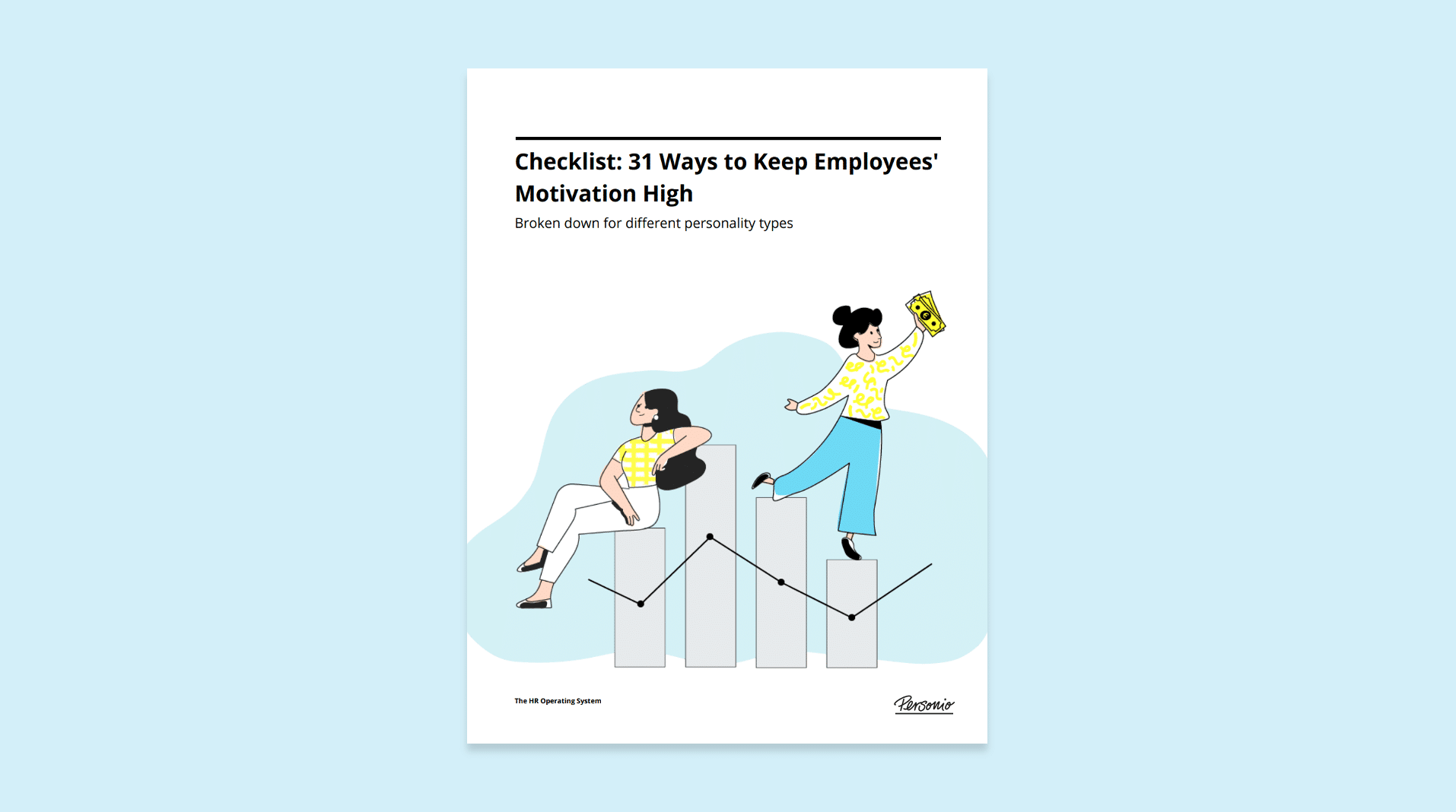Positive employee relations, and learning how to build and maintain them, matter for a whole host of reasons. That’s because, on top of operating a company, leaders also need to manage a diverse range of people.
Every employee comes equipped with different expectations, emotions, and professional wellbeing. In this article, we explore employee relations, why they matter, and meaningful ways to improve them in any organization.
Download our free guide to developing an optimal corporate culture today.
Contents
What Is The Definition Of ‘Employee Relations?’
Who Is In Charge Of Employee Relations?
Can Improving Employee Relations Transform Your Company?
Common Types of Employee Relations Issues
11 Steps You Can Take To Improve Employee Relations
Employee Relations: Better Connectedness. Better Results.
What Are Employee Relations?
Employee relations refers to a company’s approach to creating and maintaining positive relationships with and between employees. This includes both individual relationships and the collective relationships of an organization.
What Is The Role of Employee Relations?
The role of employee relations is to ensure that any two employees, no matter their position or role within the company, are able to collaborate and interact in a productive fashion. This is done to ensure a higher quality of work, a higher rate of retention, and an overall increased sense of satisfaction within your organization.
Are There Different Kinds of Employee Relations?
Employee-employee and employee-manager relationships have different boundaries and expectations, but there should still be guidelines and policies in place to ensure both are built and maintained positively.
Having positive relationships with fellow employees can increase employee satisfaction by 50% — not to mention it makes day-to-day work a lot more enjoyable.
The same goes for employee-manager relations. While an employee may not have the same relaxed relationship with their manager as they do with their coworker, if they trust them, feel supported by them, and respect them (and feel respected in return), they’re often more engaged, productive, and aligned with the company’s goals.
But that’s not always the case — half of UK workers have quit their jobs because of their managers, and only 18% of the same surveyed workers say they trust their managers.
Is HR In Charge Of Employee Relations?
A company’s HR department is typically responsible for managing employee relations. They may also have a specific Employee Relations Manager (or team) who focuses specifically on tasks and issues related to employee relations.
Those in charge of employee relations are often responsible for:
- Liaising between employees and managers, leaders, or supervisors
- Creating or advising on workplace policies around employee issues and needs
- Helping to create the company’s employee handbook
- Preventing and resolving issues between employees and management
- Helping to improve and maintain positive working conditions (pay, benefits, work-life balance, etc.)
- Managing employee files
- Assisting in the recruiting, hiring, and employee exiting processes
- Sharing company news, announcements, or policy updates
Read more here for our complete guide to creating employee handbooks.
What Is The Importance of Employee Relations?
When a leadership team, manager, or HR professional has the resources to manage their employees well, they can create a glowing organizational culture that leads to amplified productivity, employee satisfaction, and retention.
For many workers, finding a workplace with a positive organizational culture is even more important than salary. Luckily, a lot of the groundwork for a healthy and positive organizational culture can be done by building better employee relations.
On the other hand, negative employee relations can cause a company to self-implode. When not addressed and improved, they leave the organization to break down from the inside out, costing them employees, time, and money.
Instead, you can build your company up — even stronger than before — with positive employee relations.
Here’s what can happen when your employee relations improve:
| Benefit | Reason |
|---|---|
| Employees are More Engaged | An important part of building employee relations is maintaining communication. When employees know what’s going on at their company, they feel more involved, connected, and valued. On the flip side, poor employee relations can dissolve that connection, and instead make workers feel isolated and less a part of a team. |
| The Employee Experience Improves | When employees have positive relations with their fellow employees and management, there’s often better communication, a better understanding of their role and expectations, and better alignment with the company’s values and mission. |
| Workplace Culture is More Positive | Positive work environments are proven to boost productivity. Great workplace culture and organization development don’t just benefit those working at the company at the time, either — having a positive culture can help attract and retain top talent, too. |
| You Retain Employees for Longer | If you want to retain employees for longer, give them fewer reasons to leave. Surveyed employees from companies with high retention rates say that their healthy relationships with their coworkers and managers are one of the main reasons why they stay at their job. |
Free Resource: Change Management Guidelines
Having trouble instituting effective change in your organization? Download our change management guidelines to help give your HR a helping hand.
What Are Common Employee Relations Examples?
Over a third of employees have experienced some sort of interpersonal conflict in their workplace in the past year. These are an unavoidable part of corporate life, whether they’re between employees or employees and management.
Employee issues are as varied as the employees within a company, but they typically stem from one of the following core topics:
1. Performance
Performance-related issues are most often associated with an employee producing underwhelming work. But they can also include the day-to-day failings of an employee that affect the entire team.
Examples of performance issues include:
- Not meeting assigned goals
- Completing tasks late
- Regularly missing or being late to work/meetings
- Not reachable when working remotely
- Violating workplace safety rules
2. Interoffice Relationships
A part of managing a team is managing the relationships within the team. Both small and large companies can struggle with interoffice issues.
Examples of interoffice relationship issues include:
- Harassment
- Inappropriate behavior
- Disrespecting shared space
- Gossiping
- Bullying
3. Leadership
A successful employee-leadership relationship is a two-way street. In a recent survey, 23% of employees said their management team contributes to a negative work environment.
Examples of leadership issues include:
- Employees not trusting leadership (Going against leadership advice or direction)
- Employees not respecting leadership (Gossiping about or bullying management)
- Leadership not being approachable or open (Leading to disengagement and the employee feeling undervalued)
- Leadership not offering guidance (Leading to employees feeling isolated)
4. Behavioral Or Personal Matters
Behavioral or personal issues in the workplace are often the most difficult to approach because of their sensitive nature.
Examples of behavioral or personal issues include:
- Employee keeping a messy desk or personal space
- Personal hygiene issues
- Substance abuse issues
Free Resource: Employee Survey Template
Take the temperature of your organization with this helpful employee survey template. Then, take your results and make strategic investments in improving employee relations today.
11 Steps To Strategic Employee Relations
No workplace is perfect. While you’ll always experience conflicts on some scale, there are a few actionable steps leaders, managers, and HR professionals can take to build and improve better employee relations:
1. Put The Employee Experience First
Improving the relationships between management and employees starts by uncovering your employees’ motivations, expectations, and current level of job satisfaction.
This is especially effective when approached on the individual level. Speak with employees one-to-one to uncover what’s not working in their role or experience, and determine if the issues can be resolved by making strategic employee relation improvements.
2. Break Down Walls Between Management And Employees
Do you want to maintain a culture of respect in your company? Of course. But you also want to be approachable and accessible to your employees.
Apple CEO Tim Cook is a great example of this; it’s a simple thing, but he regularly eats lunch with his employees. Make yourself approachable and accessible, and a sense of comradery in the office will follow.
3. Provide Formal Management Training
Even though 66% of organizations provide leadership training, 72% of them report a deficit in leadership and management skills.
Managers and supervisors may have been promoted because of their experience in the company, or at another company in a similar role, but many of them have never received the resources and training they need to be truly effective leaders.
One-time training isn’t always enough, either. New and seasoned leaders alike can benefit from annual training courses to keep them sharp and on the cutting-edge of what’s needed from a leader in today’s modern workplace.
4. Celebrate Success
Don’t wait for formal evaluations to highlight an employee’s achievements. Whether they reached a set goal, handled a difficult situation well, or received praise from a client, recognizing and rewarding their successes can help keep them inspired.
Recognizing those successes publicly — at monthly team meetings, for example — can be exceptionally motivating.
5. Don’t Play Favorites
Treat employees at all stages of the company fairly and equally. This may seem straightforward, but there are often unconscious biases within the workplace based on an employee’s seniority or success.
6. Set An Example
If your management team takes a “rules for thee, not for me” approach to work, the respect they’ve earned from their employees can quickly deteriorate. Hold leaders at every level of the company accountable for their actions and ensure they’re following employee guidelines.
7. Communicate Clearly And Often
In employee relations, effective communication can bring clarity to conflict. Start by creating an open dialogue between management and employees by having monthly or weekly meetings. Face issues head-on, clarify misunderstandings and miscommunications immediately, share your knowledge, and give equal say to each party when managing disagreements.
8. Be Approachable
Having an issue at work is stressful enough. But feeling like you can’t go to your manager or boss about it? That’s even worse. How approachable and accessible are your HR department and leadership team? Can an employee reach out easily and privately to discuss an issue?
Luckily, there are many digital tools and apps that offer one-to-one messaging. Instead of calling or emailing, using an app like Slack or Google Chat can make difficult discussions easier for employees, or at least help them start the conversation before entering into a more formal meeting.
9. Involve Your Employees
By continually seeking employee feedback, involving them in company decisions, and listening to their opinions, you’re telling your employees you trust them and their expertise.
And trust does everyone a world of good — people at high-trust companies experience 74% less stress, 50% higher productivity, and 40% less burnout.
10. Focus On Inclusivity
Workplace bullying is a common issue in the UK, with one in five employees agreeing that their team members reject others for being different. In your employee handbook, include your company’s mission to maintain inclusivity around race, religion, orientation, and ability, and make sure it’s actively reaffirmed on a regular basis.
11. Build An Official Employee Relations Handbook
Your employee relations handbook comprises your company’s mission, values, policies, and plans for addressing employee issues. The handbook — or employee relations plan — brings clarity for new employees and ensures the entire company is on the same page. It can also help the organization avoid internal and legal headaches by including information such as, but not limited to:
- The company’s mission, culture, and values
- General employee information (role, expectations, etc.)
- Compensation, remuneration, and benefits information
- Policies around time off, scheduling, and leave
- Non-disclosure agreements
- Conflict of interest statements
- Company policies and procedures
- Disciplinary actions and procedures
- Compliance policies
- Signed acknowledgment of employee
Ready To Build Your Employee Relations Policy?
With clear employee relations policies in place, you can align your team with your culture, values, and mission from day one; overcome issues by following clear-cut procedures; and benefit from a build better connectedness throughout the company.
Positive employee relations empower team members at all levels to work together more collaboratively, with more satisfaction, and with more motivation to achieve collective and individual goals.
Download Our Guide
To Company Culture






